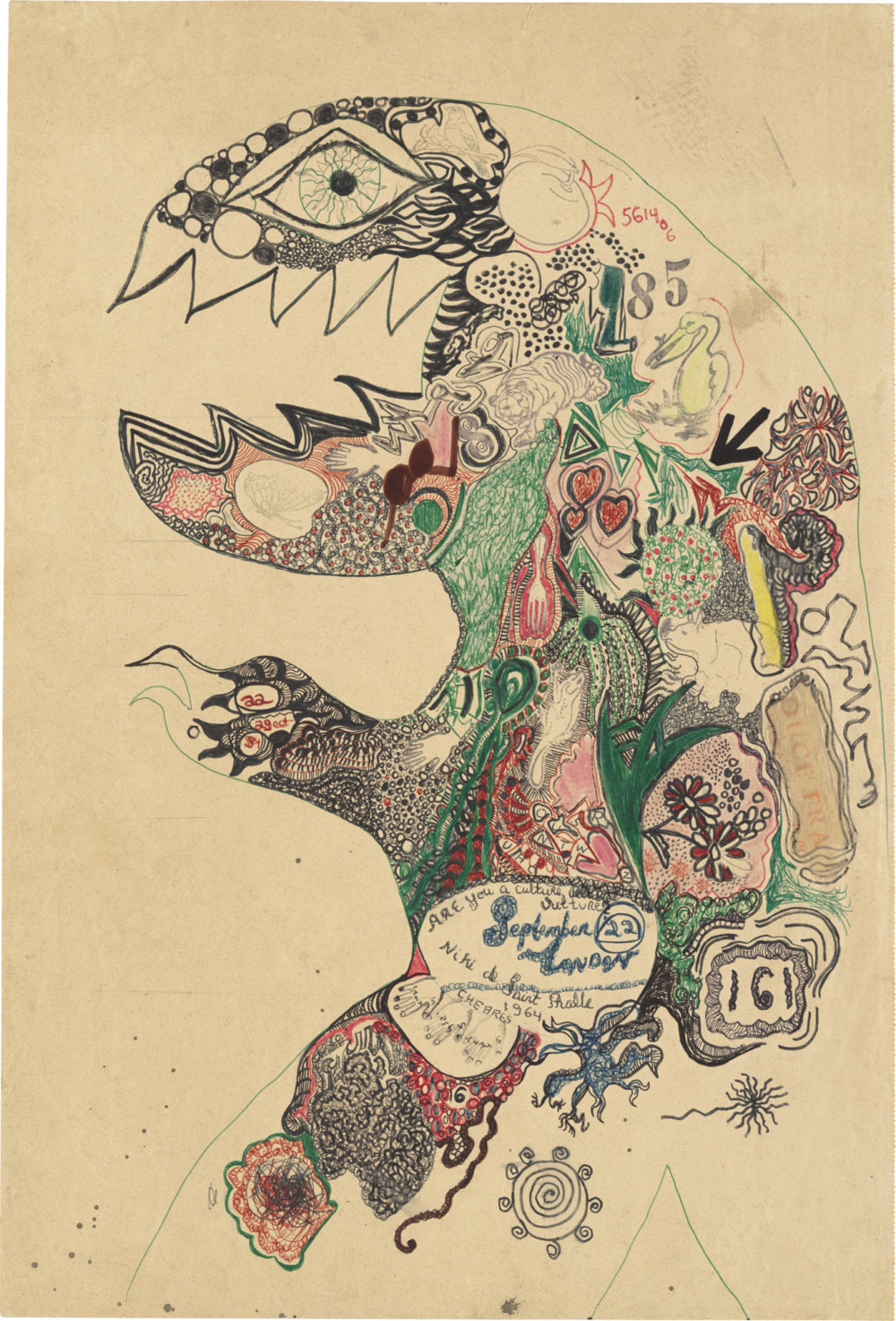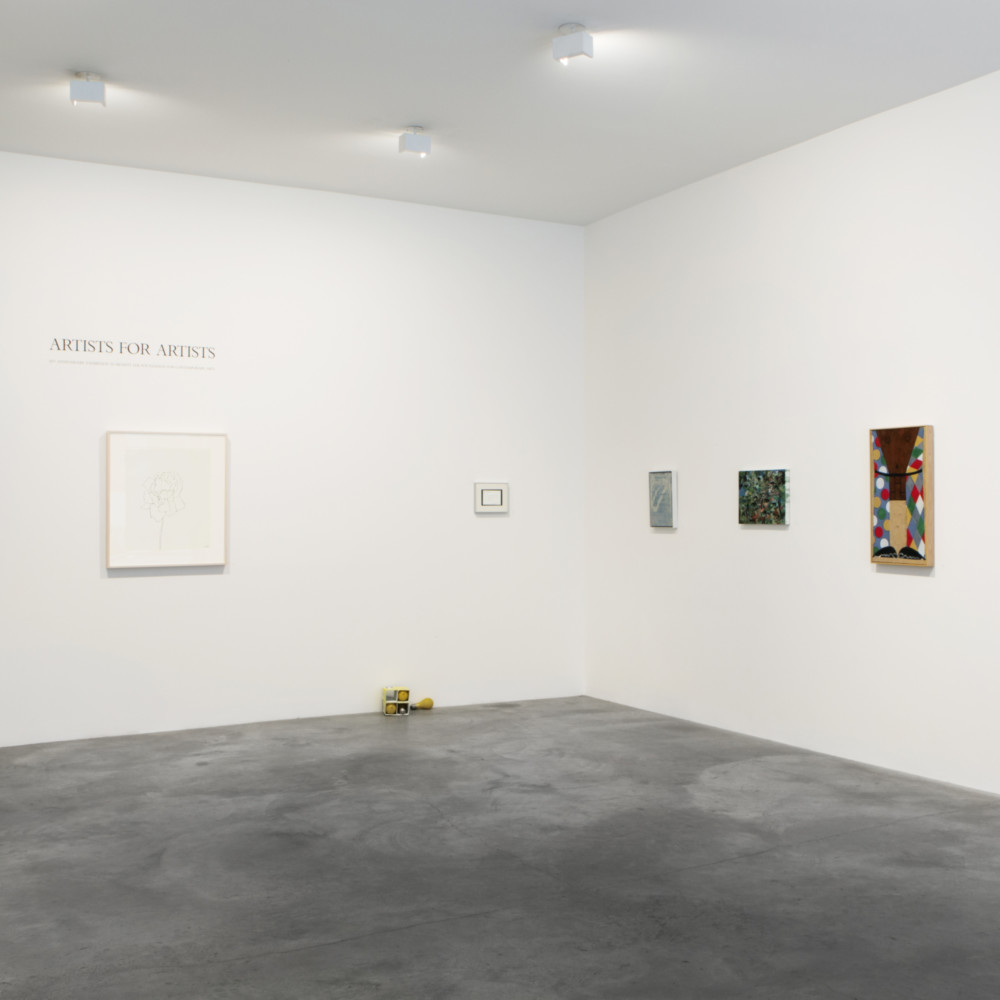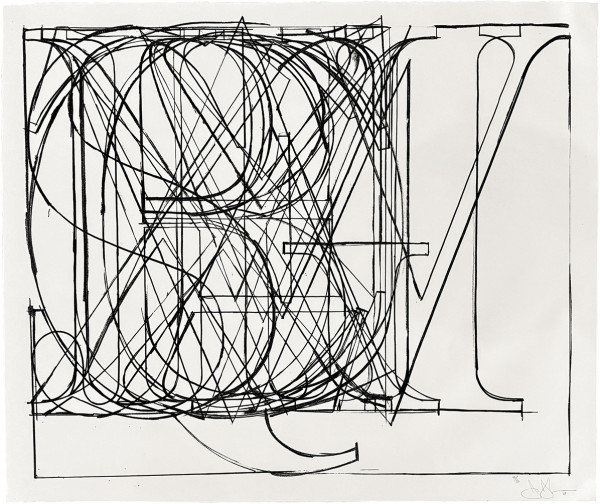Jasper Johns

Untitled 2018 Oil on canvas 50¾ × 34⅛ inches; 129 × 87 cm
When Jasper Johns had his first one-person exhibition at the Leo Castelli Gallery — in 1958, at the age of twenty-seven — its impact was widespread and immediate. His work signaled a new direction for contemporary art, one that would lead away from Abstract Expressionism and forward to Pop, Minimalism, Conceptual art, and beyond. The Museum of Modern Art acquired four works directly from the show: paintings of targets, flags, and numerals (subjects Johns called “things the mind already knows”).
In the seven decades since, Johns has continued to explore new symbols and images, building an extensive personal lexicon that is sometimes enigmatic but always unmistakably his own. A single painted motif might reappear decades later in a sculpture, a drawing, a print, or even in another painting. “My experience of life is that it’s very fragmented; certain kinds of things happen, and in another place a different kind of thing occurs,” he has explained. “I would like my work to have some vivid indication of those differences.”
Jasper Johns (b. 1930) grew up in South Carolina and moved to New York in 1953, where he met Robert Rauschenberg, John Cage, and Merce Cunningham. The artistic ideas of these four friends and sometime collaborators helped establish a new American avant-garde, redefining the role of artistic intent through the use of found imagery and chance. Johns’s work in particular has had a profound impact on American culture. He has been the subject of one-person exhibitions at museums around the world, including career surveys at the Museum of Modern Art, the Metropolitan Museum of Art, and the Whitney Museum of Art in New York, the National Gallery of Art in Washington, DC, the Centre Pompidou in Paris, the Royal Academy in London, the San Francisco Museum of Modern Art, and the Philadelphia Museum of Art.
Selected Works

Tantric Detail I, II, III 1980
Oil on canvas, three panels
Untitled 2001
Encaustic on canvas and wood with objects
Bushbaby 2003
Encaustic on canvas and wood with objects
Nines 2006
Encaustic and oil on canvas with objects, two panels
Numbers 2007
Aluminum
Untitled 2010
Ink on plastic
Regrets 2013
Oil on canvas
Untitled 2016
Oil on canvas
Untitled 2018
Oil on canvas
Exhibitions

JASPER JOHNS
Drawings 1982–2021
September 13–October 26, 2024
523 West 24th Street
New York

JASPER JOHNS
New Works on Paper
September 25–October 30, 2021
526 West 22nd Street & Online
New York & Online

JASPER JOHNS
Recent Paintings & Works on Paper
February 9–April 6, 2019
522 West 22nd Street
New York

JASPER JOHNS
Monotypes
May 5–June 25, 2016
522 West 22nd Street
New York

JASPER JOHNS
Numbers, 0–9, and 5 Postcards
November 2, 2012–January 5, 2013
1062 North Orange Grove
Los Angeles

JASPER JOHNS
Recent Prints
November 2, 2012–January 5, 2013
7818 Santa Monica Boulevard
Los Angeles

JASPER JOHNS
New Sculpture and Works on Paper
May 7–July 1, 2011
522 West 22nd Street
New York

JASPER JOHNS
Drawings 1997–2007
February 2–April 12, 2008
522 West 22nd Street
New York

JASPER JOHNS
Catenary
May 7–June 25, 2005
522 West 22nd Street
New York
Group Exhibitions

ONE HUNDRED DRAWINGS
November 8, 2019–January 18, 2020
523 West 24th Street
New York

THE CRITIC
September 13–October 26, 2019
523 West 24th Street
New York

PAINTING: NOW AND FOREVER, PART III
June 28–August 17, 2018
522 West 22nd Street
526 West 22nd Street
523 West 24th Street
New York

ARTISTS FOR ARTISTS
51st Anniversary Exhibition to Benefit the Foundation for Contemporary Arts
December 13, 2014–January 10, 2015
526 West 22nd Street
New York

A DRAWING SHOW
October 4–November 29, 2014
526 West 22nd Street
New York

SCULPTURE
Katharina Fritsch, Robert Gober, Jasper Johns, Ellsworth Kelly, Martin Puryear, Charles Ray
February 8–April 19, 2014
523 West 24th Street
New York

THE FOUNDATION FOR ART AND PRESERVATION IN EMBASSIES'
Lee Kimche McGrath Original Print Collection
October 6–October 13, 2012
7818 Santa Monica Boulevard
Los Angeles

SMALL SCULPTURE
September 23–October 28, 2006
523 West 24th Street
New York

RECENT DRAWINGS
Robert Gober, Roni Horn, Jasper Johns, Ellsworth Kelly, Brice Marden, Ken Price, Charles Ray, Terry Winters
January 14–February 25, 2006
523 West 24th Street
New York

100 DRAWINGS AND PHOTOGRAPHS
Tenth Anniversary Exhibition
November 3–December 22, 2001
523 West 24th Street
New York

OPEN SECRETS
Seventy Pictures on Paper, 1815 to the Present
November 19–December 28, 1996
523 West 24th Street
New York

ARTISTS’ SKETCHBOOKS














